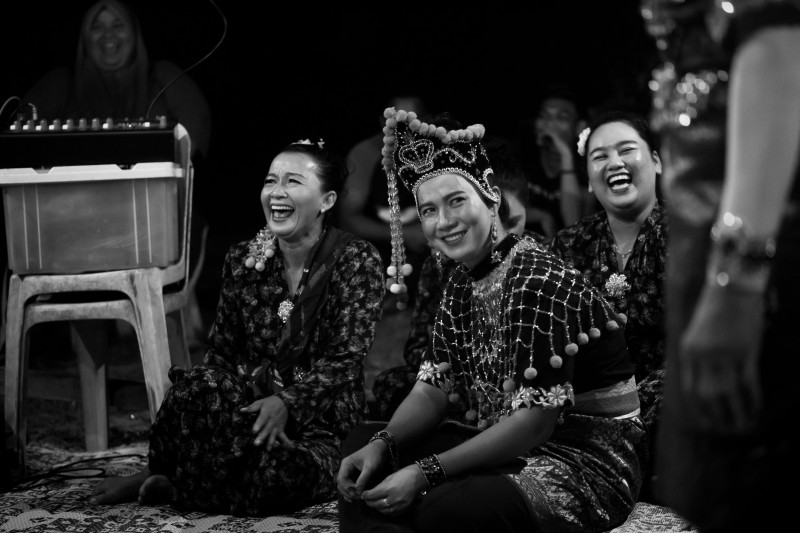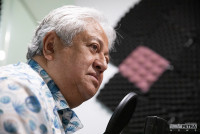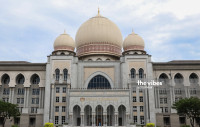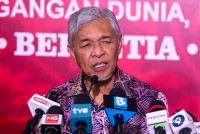THE tale has been told countless times: Sita Dewi, consort of Seri Rama, is kidnapped by the ogre Maharaja Wana and held captive in his kingdom of Langkapuri.
Yet something is profoundly different about this telling. Sita Dewi waits in the dark chamber, not for a saviour, but for her captor. When Maharaja Wana comes to her, his senses roused from the battlefield, Sita Dewi lures the hot-blooded ‘raksasa’ into a passionate embrace. Clasped by Maharaja Wana’s twenty arms, Sita Dewi seductively loosens the dark coil of her hair. In a breath-like instant, she draws her ‘cucuk sanggul’ (hairpin) and strikes it deep into Maharaja Wana’s pounding heart.
In the hands of the great Wayang Kulit dalang of Kelantan, the late Tok Dalang Dollah Baju Merah, Sita Dewi needs no one to save her. In orthodox versions of the ‘Ramayana’, the Indian epic that is the origin of the Malay ‘Hikayat Seri Rama’ and its oral equivalent ‘Hikayat Maharaja Wana’ — the basis of the Wayang Kulit Kelantan’s ‘cerita pokok’ (trunk story) — it is the monkey warrior Hanuman who finds Sita in Lanka, and Lord Rama who finally rescues her and defeats Ravana.
What is striking about Dalang Dollah’s interpretation is not only his reverence and affection for Sita Dewi, the heroine who, among certain Kelantanese dalang, remains more beloved than her vainglorious husband, Prince Seri Rama. The vigour of Dalang Dollah’s Sita Dewi lies in the power she wields to act on her own behalf and intervene in her own destiny, while the male heroes wear themselves out in war.
Dalang Dollah’s empowered Sita Dewi is rooted in a long tradition of formidable women in Kelantan’s history and mythology, and in the indelible presence of strong women in contemporary Kelantanese society. Kelantan’s folklore and cultural traditions such as Wayang Kulit and Mak Yong embody the indomitable ‘semangat’ of women that continues to shape individual character and community life in Kelantan.
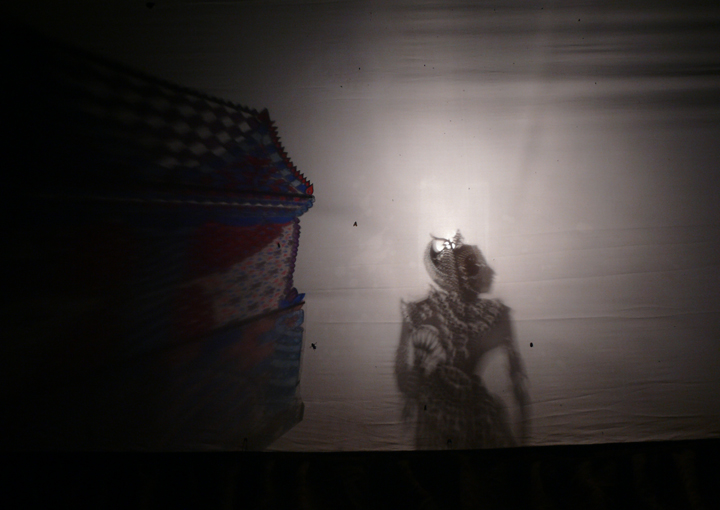
*
The mythological landscape of Kelantan-Pattani is dominated by powerful women who were respected rulers of their kingdoms. Often an amalgamation of the historic and the mythic, these figures are enduring archetypes of feminine strength and spirit. The legendary queen of Kelantan, Che Siti Wan Kembang — believed to have reigned for more than 60 years during the 17th century — gained renown for her beauty, wisdom, diplomacy, and prowess as a warrior. Her adopted daughter, Puteri Saadong, is said to have reigned as Raja of Jembal and later as Raja of Kelantan. To this day, Kelantan is known lovingly by locals as ‘Negeri Che Siti Wan Kembang’ or the poetic epithet associated with her kingdom, ‘Tanah Serendah Sekebun Bunga’. A pair of kijang mas (golden barking deer), a beloved pet of the legendary queen, adorn Kelantan’s royal coat of arms.
Culturally and historically linked to Kelantan, the Sultanate of Pattani also saw the ascent to power of several women rulers. The ‘golden age’ of Pattani that spanned the late 16th to early 17th centuries is associated with four successive sultanahs — Ratu Hijau (The Green Queen), Ratu Biru (The Blue Queen), Ratu Ungu (The Violet Queen), and Ratu Kuning (The Yellow Queen). Several centuries earlier, in 1297, the traveller and scholar Ibn Battuta had written of his encounter with Urduja, a Muslim warrior princess of Kailukari in the kingdom of Tawalisi, who commanded an army of women and men, spoke a Turkic language and could write in Arabic script. While the locations of Kailukari and Tawalisi remain unknown and disputed, some have speculated that ‘Kailukari’ may refer to Kuala Krai in Kelantan.
In his portrayal of Sita Dewi wielding her ‘cucuk sanggul’ to slay Maharaja Wana, Dalang Dollah references and invokes the beloved Kelantanese legend of Puteri Saadong. It is an instructive example of how the Ramayana is adapted to local context, instilled here with a distinctly Kelantanese sensibility. It also demonstrates how masters of oral tradition have been adept at ‘intertextuality’ long before it was pronounced as a category of analysis by postmodernist literary theory.
In contrast to Che Siti Wan Kembang, Puteri Saadong embodies the archetype of tragic heroine in Kelantan mythology. She is said to have sacrificed her freedom for the sake of her kingdom and people. When King Narai of Siam attacked Kelantan, Puteri Saadong was captured and her husband Raja Abdullah was to be killed. To spare her husband’s life, and to halt the attack on her beloved kingdom, Puteri Saadong let herself be taken to Ayutthaya to become a concubine in the royal court. She asked Raja Abdullah to wait for her and not to remarry. According to the legend, Puteri Saadong possessed mystical powers: each time King Narai tried to bed her, he was struck down by a terrible illness. After several years, King Narai begged Puteri Saadong to cure him, which she did on condition that he release her from captivity. Upon her return to Kelantan, Puteri Saadong discovered that Raja Abdullah had remarried, despite his promise to her. In a fit of rage at his betrayal, Puteri Saadong drew her ‘cucuk sanggul’ and plunged it into Raja Abdullah’s heart. Overcome with despair, Puteri Saadong renounced her worldly power, leaving her palace for the mountains of Kelantan, where she is still said to wander.
Symbolically, Puteri Saadong represents spiritual feminine power that resists and subverts mundane political power. The complexity of her character encompasses elements of sacrifice, courage, passion, regret, and melancholy. Like Dalang Dollah’s Sita Dewi, Puteri Saadong determines her own destiny and creates the conditions of her own freedom. Puteri Saadong also embodies aspects of both healer and patient. The Main Puteri healing tradition of Kelantan is said, by some Tok Puteri (shamans), to have been created to console Puteri Saadong’s grieving spirit.
*
The powerful position of women in traditional Kelantanese society reveals itself not only in the realm of folklore but in the conspicuous presence of women in Kelantan’s economic life. The traditional role of women in Kelantan has long been one of household authority and economic power. On his voyage to Kelantan in 1837, Munsyi Abdullah observed that industrious Kelantanese women dominated trade at the marketplace, while the men idled their days away with frivolous pastimes and getting into fights. Even today, women wield more power than men in Kelantan’s local markets and often manage the household finances. A visit to Pasar Siti Khadijah in Kota Bharu affirms the perennial presence of women in Kelantan’s economic landscape.
Some Kelantanese women attribute their spirit of entrepreneurship to their legacy of powerful women. Hasnah Mat Jusoh, a traditional arts practitioner and part-time culinary entrepreneur, asserts: “Kelantanese women carry the spirit of Che Siti Wan Kembang, a woman leader who brought about an era of peace and prosperity. Beyond the beauty of their appearance and gentleness of their hearts, Kelantanese women have fearless spirits — they dare to take life into their own hands; they can achieve anything a man can achieve. Perhaps this is partly what makes Kelantanese women so enterprising and successful.”
The traditional power of women in Kelantanese society has been somewhat undermined by the cultural politics of the past few decades — a culmination of ideological forces attempting to redefine cultural life. Nowhere is this more evident than in the decades-long proscription of traditional arts such as Wayang Kulit, Mak Yong, Main Puteri and Manora by Parti Islam Se-Malaysia (PAS).
The Mak Yong, one of Kelantan’s distinctive and resplendent art forms, is a women-centred folk tradition nurtured by community bonds. Encompassing elements of dance, drama, storytelling, music, and ritual, the Mak Yong is rooted in the need to collectively embody and enact lament, longing, and remembering. Mak Yong elder, Che Siti Dollah (affectionately known as Moksu Ti or Mek Ti), once told me the origins of the Mak Yong, based on the version that was told to her by her guru and close companion, the late Che Ning.

According to Che Ning, the Mak Yong was created by a family (a father and his children) to commemorate their wife and mother who had passed away from illness. The children were inconsolable, weeping incessantly in longing for their dead mother. And so the father took the mother’s body and crafted a rebab (spike fiddle) — from the mother’s spine, he made the long neck of the rebab; her hair became the tresses that cascade down the rebab’s back; from her gut, he made the rebab strings; and on the body of the rebab he placed the mother’s breast. During the opening sequence of a Mak Yong, known as the Menghadap Rebab (Salutations to the Rebab), the voice of the rebab rises like a cry of lament between mother and child, stirring the inner winds of the self and urging a return to origins.
Recent proclamations by PAS about ‘lifting the ban on Mak Yong in Kelantan’ ring hollow, as their revised cultural policy still restricts women from performing what is essentially a women’s tradition. Yet for all the gesturing of ideological forces, the subliminal bonds of spirit, memory and ancestry prove stronger, always, than politics.
In the words of Mek Ti: “No man-made law can break the ‘semangat’ of Kelantanese women. The powerful heritage of our ancestors runs deep in our veins, and will live on in our daughters and granddaughters.” – The Vibes, March 7, 2021



